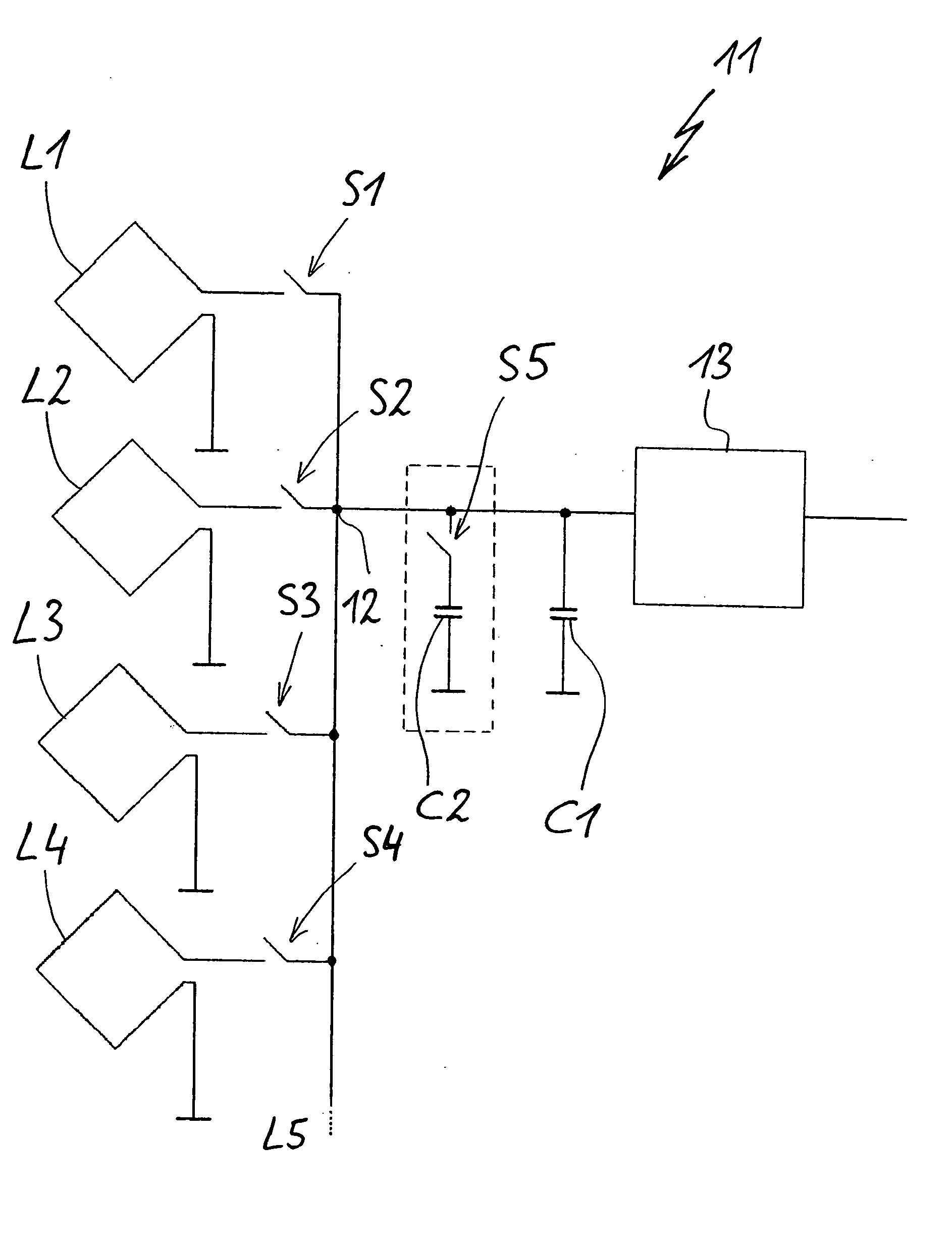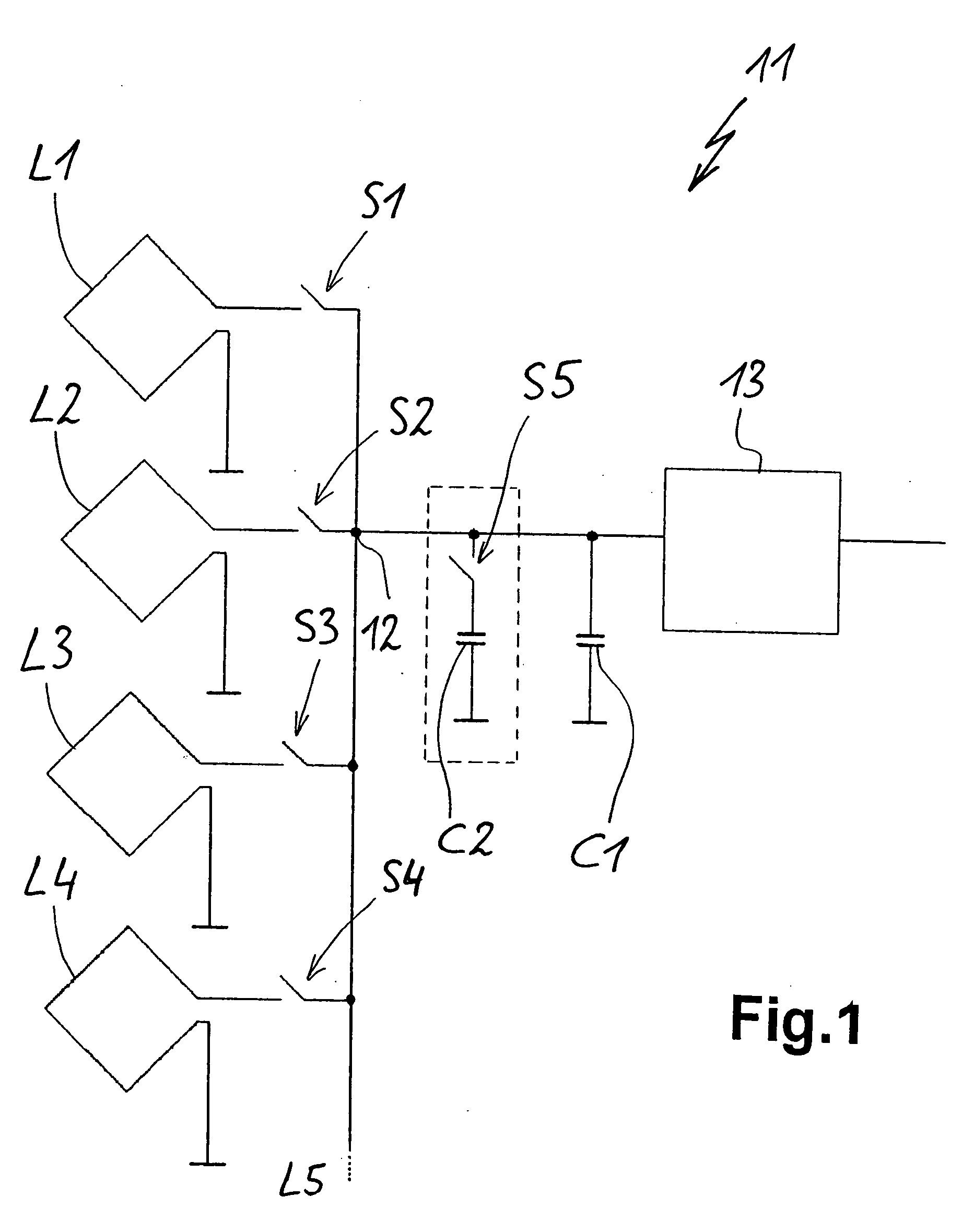Circuit arrangement for inductively operating sensor and method for the operation thereof
a technology of inductive operation and sensor, which is applied in the direction of instruments, lighting and heating apparatus, and domestic stoves or ranges, etc., can solve the problems of less widespread use no longer guaranteed clear and safe saucepan detection, and relatively complicated control of such sd sensors, etc., to reduce or even completely avoid overcoupling between leads to different sensors, improve the operation of such sensors, and reduce the resistance of drain sour
- Summary
- Abstract
- Description
- Claims
- Application Information
AI Technical Summary
Benefits of technology
Problems solved by technology
Method used
Image
Examples
Embodiment Construction
[0017] FIG. 1 shows a circuit arrangement 11, such as can for example be used for a SD system and which has four coils L1 to L4, but more can be provided. The coils L operate as SD sensors, as stated hereinbefore.
[0018] In each case the coils L1 to L4 are connected by means of a switch S1 to S4 to a common circuit node or junction 12, which is connected to a basic oscillator circuit 13 for producing the resonant circuit frequency. There is also a resonant circuit capacitor C1, which in each case together with a coil L forms a parallel resonant circuit of the inductance of the coil and the resonant circuit capacitance. In this way and in the manner of a multiplex operation, in each case one coil is connected by the corresponding switch S to the circuit junction 12. The other switches S are open and the corresponding coils L separated. The basic oscillator circuit 13 then emits a signal for a further evaluation of the resonant circuit frequency to establish whether it has changed in s...
PUM
 Login to View More
Login to View More Abstract
Description
Claims
Application Information
 Login to View More
Login to View More - R&D
- Intellectual Property
- Life Sciences
- Materials
- Tech Scout
- Unparalleled Data Quality
- Higher Quality Content
- 60% Fewer Hallucinations
Browse by: Latest US Patents, China's latest patents, Technical Efficacy Thesaurus, Application Domain, Technology Topic, Popular Technical Reports.
© 2025 PatSnap. All rights reserved.Legal|Privacy policy|Modern Slavery Act Transparency Statement|Sitemap|About US| Contact US: help@patsnap.com


